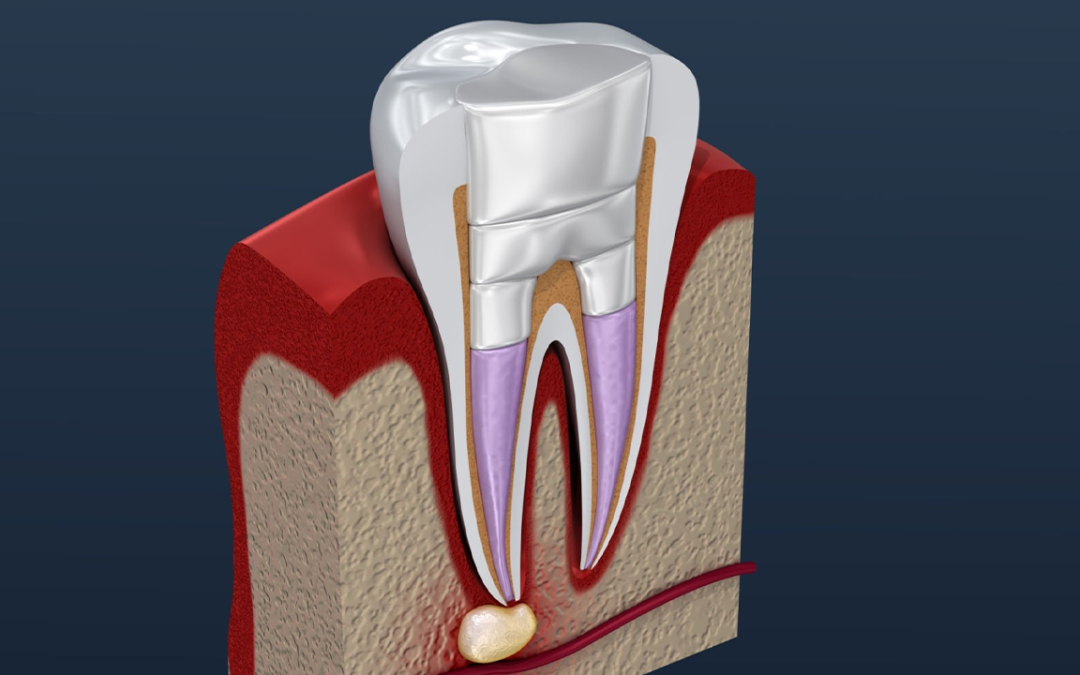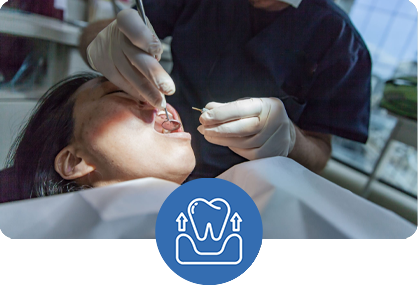Key Takeaways About Endodontic Treatments
- Endodontic treatments prioritize natural tooth preservation over extraction, maintaining proper oral function and aesthetics
- Root canal therapy is the cornerstone procedure with success rates exceeding 90% for treating infected or inflamed dental pulp
- Modern technology and techniques have made endodontic procedures significantly more comfortable with minimal recovery time
- Preserving natural teeth through endodontics maintains proper bite mechanics, prevents bone loss, and preserves facial structure
- Long-term cost analysis shows endodontic treatments are typically more economical than extraction followed by tooth replacement
- Post-treatment care and proper restoration are critical factors in ensuring the long-term success of endodontic procedures
- Advanced imaging and microscopic techniques allow specialists to treat previously challenging cases with high success rates
- Early intervention for dental issues can prevent the need for more extensive endodontic procedures
Understanding Endodontic Treatment
Endodontic treatment is a branch of dentistry focused on diagnosing and treating conditions affecting the dental pulp—the soft tissue inside your tooth containing nerves, blood vessels, and connective tissue. When this pulp gets infected or inflamed due to deep decay, repeated dental procedures, fractures, or injuries, endodontic treatment becomes necessary to relieve pain and save your natural tooth. Without proper treatment, these infections can get worse, causing severe pain, abscess formation, and eventually tooth loss.
At Oakwood Dental Clinics, we believe in saving your natural teeth whenever possible. The field of endodontics has changed a lot over the years, with advanced techniques and technologies making treatments more effective and comfortable. Our endodontic specialists use cutting-edge equipment like digital imaging, operating microscopes, and ultrasonic tools to provide precise diagnoses and treatments that save teeth while keeping you comfortable.
The main goal of endodontic treatment goes beyond just getting rid of infection and pain—it’s about saving your natural tooth and keeping it working properly. This approach offers many benefits over extraction, including maintaining normal chewing function, preserving your natural smile, protecting surrounding teeth from extra wear, and preventing the problems that come with missing teeth. Keeping your natural teeth also helps maintain jawbone density and prevents shifting of adjacent teeth that often happens after extraction.
Regular dental checkups are really important for catching problems early, before they need major endodontic work. Early detection of issues like deep cavities, tiny fractures, or cracked teeth allows for simpler treatments and better long-term results. Our team is committed to teaching you how to maintain good oral health and possibly avoid complex endodontic procedures through proper home care and prevention.
Root Canal Therapy: The Cornerstone of Endodontics
Root canal therapy remains the most common and effective endodontic procedure for saving teeth that would otherwise need to be pulled. Despite what many people think, modern root canal treatments are now similar to routine fillings in terms of comfort. Most procedures can be done in just one or two visits, depending on how complex the case is and the tooth’s anatomy. With success rates over 90% in studies, this procedure has helped millions of people worldwide keep their natural teeth without needing extraction and replacement.
The root canal procedure involves several careful steps designed to eliminate infection while preserving tooth structure:
First, our endodontist performs a thorough examination, including detailed x-rays using advanced digital imaging, to evaluate the infection, canal anatomy, and develop a treatment plan just for you. Local anesthesia is given using the latest techniques to ensure your comfort throughout the procedure—many patients say it feels no different than getting a regular filling. Once you’re numb, a small opening is made in the crown of the tooth to access the pulp chamber and root canals.
Next, the infected or inflamed pulp tissue is carefully removed from the chamber and canals using special tools. The canals are then cleaned, shaped, and prepared using precise instruments that maintain the natural canal shape while efficiently removing infected tissue. This step requires expertise to navigate the complex root canal anatomy while preserving the tooth’s structure.
After thorough cleaning and shaping, the canals are disinfected with antimicrobial solutions that kill bacteria in areas tools can’t physically reach. The cleaned and disinfected canals are then filled with a biocompatible material called gutta-percha and sealed with special cement to prevent future bacterial contamination. This filling technique ensures complete sealing of the canal space to prevent reinfection.
Finally, a permanent restoration—usually a custom crown or large filling—is placed to protect the treated tooth and restore full function and appearance. This final step is crucial for the long-term success of the treatment, as it prevents fracture of the treated tooth and prevents recontamination. The restoration returns the tooth to normal form and function, allowing you to chew and speak normally.
At Oakwood Dental Clinics, our experienced team uses advanced techniques, specialized equipment, and proven methods to ensure the highest possible success rates for root canal treatments. We understand that many patients feel nervous about root canals based on outdated information, which is why we prioritize your comfort, clear communication, and compassionate care throughout the entire process. Our goal is to provide a stress-free experience while delivering effective treatment that saves your natural tooth and restores your oral health.
When Root Canal Therapy Is Necessary
Knowing the signs and symptoms that indicate you might need endodontic treatment is really important for saving your natural teeth. While some cases have obvious symptoms that make you seek dental help right away, others might develop slowly and only be found during regular dental checkups by experienced dentists. Being aware of the warning signs can help you get timely treatment, potentially saving a tooth that might otherwise need to be pulled if treatment is delayed.
The most common signs that might suggest you need root canal therapy include persistent tooth pain that can range from mild discomfort to severe throbbing, especially pain that gets worse when biting or chewing. This pain pattern often signals that the pulp tissue inside your tooth has become infected or inflamed. Another important warning sign is long-lasting sensitivity to temperature, particularly sensitivity to hot or cold that continues even after the stimulus is gone. This lingering temperature sensitivity is different from normal brief sensitivity and typically indicates pulp damage that needs endodontic treatment.
Noticeable tooth discoloration, especially darkening or graying of a single tooth compared to those next to it, may indicate pulp damage or death. When the pulp becomes infected or dies, it releases substances that can stain the surrounding tooth material, causing a visible color change. Swollen, tender, or inflamed gums around a specific tooth often indicate that an infection has spread from the pulp through the root tip and into the surrounding tissues. In advanced cases, you might notice a pimple-like bump on the gums next to the affected tooth—called a “gum boil”—which is an abscess draining infection from the root canal system.
It’s important to know that some teeth needing endodontic therapy may have no symptoms at all despite significant pulp problems. Teeth can undergo pulp death without causing noticeable symptoms until the infection spreads to involve the tissues around the root tip. Regular dental check-ups with thorough examination and appropriate x-rays are essential for early detection and treatment before symptoms become severe or the tooth becomes too damaged to save. Our experienced dental team uses advanced diagnostic tools including digital x-rays, 3D imaging, pulp testing equipment, and microscopic examination to identify issues that might not be apparent through symptoms alone, allowing for timely treatment and better outcomes.
Advanced Endodontic Procedures
While standard root canal therapy works for most cases of pulp infection or inflammation, certain complex situations require more specialized and advanced endodontic procedures. These sophisticated treatments allow us to save natural teeth in challenging cases where standard root canal therapy might not be enough due to complex anatomy, previous treatment failure, or extensive disease. At Oakwood Dental Clinics, our specialists have extensive additional training in these advanced techniques to provide comprehensive endodontic care capable of addressing even the most challenging cases that many general dentists might consider untreatable.
Endodontic retreatment is a specialized procedure needed when a tooth that has already had root canal therapy develops new problems, shows persistent symptoms, or fails to heal properly according to x-rays. Treatment failure can happen for various reasons including new decay affecting the original seal, delayed or inadequate final restoration, untreated canals, complex canal anatomy that wasn’t fully addressed in the initial treatment, or recontamination of the canal system. The retreatment process involves carefully reopening the tooth, removing the previous filling materials using special solvents and instruments, addressing any new infection or inflammation, thoroughly disinfecting the canal system, and placing new state-of-the-art filling materials with improved sealing properties. Though technically more challenging than initial treatment due to changed anatomy and the presence of restorative materials, endodontic retreatment gives a previously treated tooth a valuable second chance at preservation, often successfully saving it from extraction.
In situations where conventional root canal treatment or retreatment cannot adequately resolve persistent problems, an apicoectomy (microsurgical endodontic surgery or root-end resection) may be needed. This precise microsurgical procedure involves making a small incision in the gum tissue to expose the underlying bone and root structure. Using operating microscopes for enhanced visibility, the infected or inflamed root tip is surgically removed along with any surrounding diseased tissue. The root end is then prepared with ultrasonic instruments and sealed with biocompatible materials specifically designed for surgical applications. These materials create an excellent seal that prevents bacterial leakage and promotes tissue healing. Apicoectomies are typically performed when persistent inflammation or infection remains at the root tip despite previous thorough endodontic treatment, and when retreatment is not possible or unlikely to solve the issue. With proper case selection and technique, these procedures show very high success rates in saving teeth that would otherwise require extraction.
Our experienced dental team also provides specialized endodontic treatments for various traumatic dental injuries, including dislodged teeth, completely knocked-out teeth, horizontal and vertical root fractures, and crown fractures that expose the pulp tissue. Managing dental trauma requires immediate assessment and treatment, as the chances of saving traumatized teeth decreases significantly with delayed treatment. Our practice has specific protocols for emergency trauma cases, allowing us to provide prompt, appropriate care that maximizes the chances of successful outcomes. If you experience any form of dental trauma, contact our office immediately for emergency evaluation and care. Our team has the specialized knowledge, skills, and equipment necessary to handle these urgent situations and provide the sophisticated care required to preserve your natural teeth whenever possible.
Root Canal vs. Tooth Extraction: Making the Right Choice
When faced with a severely damaged, infected, or painful tooth, patients often need to decide between getting root canal therapy to save the natural tooth or having the tooth pulled and replaced with an artificial one. While each case is unique and requires individual assessment based on multiple factors, understanding the benefits, limitations, and long-term effects of both treatment options can help inform your decision. At Oakwood Dental Clinics, we provide thorough, evidence-based information and personalized consultation to help you make the treatment choice that best fits your specific oral health needs, functional requirements, appearance goals, and personal preferences.
Saving your natural tooth through endodontic therapy offers several important benefits that directly impact your long-term oral health and function. Keeping your natural tooth helps preserve normal biting force, chewing sensation, and natural appearance—things that even the best artificial replacements can’t perfectly copy. Your natural teeth are designed to work together as a system, and keeping each tooth helps maintain this balance. Keeping your original tooth prevents neighboring teeth from gradually shifting into the empty space, which can lead to misalignment, bite problems, and other issues that may require additional treatments. A tooth that has had successful endodontic therapy works just like any other natural tooth, allowing normal chewing, speech, and maintaining your natural smile without the potential problems associated with artificial replacements. With proper restoration and good oral hygiene, teeth that have received proper endodontic treatment show excellent long-term survival rates, often lasting a lifetime.
Despite the benefits of endodontic treatment, there are certain situations where tooth extraction may be the more appropriate option based on sound clinical judgment. When a tooth has suffered catastrophic structural damage that makes it impossible to restore—such as extensive fractures below the gumline, severe decay that has destroyed most of the crown, or significant root resorption—extraction might be the only viable treatment option. Advanced gum disease that has severely damaged the supporting bone and ligament may also make the tooth unsalvageable despite endodontic health. In certain orthodontic treatment plans, strategic removal of specific teeth may be required to create adequate space for proper alignment or to address significant jaw discrepancies. While endodontic therapy with appropriate restoration is typically more cost-effective when considering the lifetime value and avoiding the need for prosthetic replacement, the initial treatment costs for comprehensive root canal therapy and full-coverage crown may be higher than simple extraction in some cases. However, it’s important to consider the additional costs associated with tooth replacement options (bridges, implants, or removable prosthetics) when making this financial comparison.
Root Canal vs. Extraction Comparison
Preservation
Root canal preserves natural tooth structure and function
Treatment Time
Root canal: 1-2 appointments
Extraction + replacement: Multiple visits over months
Long-term Value
Root canal typically more cost-effective than extraction with replacement
Outcome
Root canal maintains natural smile and prevents bone loss
At Oakwood Dental Clinics, our experienced team conducts a thorough evaluation of each individual case and discusses all viable treatment options with our patients. Our philosophy emphasizes providing the most beneficial treatment approach for your long-term oral health and function while respecting your personal preferences, financial considerations, and individual circumstances. We carefully evaluate multiple factors during treatment planning, including the importance of the tooth within the arch, the extent of structural damage, the overall gum health, presence of infection around the root tip, restorative prognosis, bite relationships, and your personal treatment goals and expectations. In most appropriate cases, preserving your natural tooth through endodontic treatment provides the most favorable long-term outcome for maintaining optimal oral function, appearance, and quality of life compared to extraction and artificial replacement.
Modern Endodontic Technologies
The field of endodontics has benefited greatly from major technological innovations, making today’s treatments much more precise, efficient, predictable, and comfortable for patients compared to traditional approaches. At Oakwood Dental Clinics, we’ve invested in state-of-the-art technologies and equipment to provide the highest standard of evidence-based endodontic care available. These technological innovations allow our specialists to successfully treat and save teeth that might have been considered unsalvageable just a decade ago, while also providing much better comfort and shorter treatment times for our patients.
Advanced digital x-rays and three-dimensional cone beam computed tomography (CBCT) imaging have changed how we diagnose endodontic conditions and plan precise treatments. These sophisticated imaging systems provide detailed, high-resolution images of tooth structure, root canal anatomy, and surrounding bone with much less radiation exposure compared to traditional film-based x-rays. The exceptional detail revealed by these imaging tools allows for more accurate diagnosis of subtle problems, identification of additional canals, detection of vertical root fractures, and visualization of complex anatomical variations that might be missed with traditional two-dimensional x-rays. This enhanced diagnostic capability leads to more thorough treatment planning and better clinical outcomes. Digital imaging technology also allows us to easily share these detailed images with patients on chairside monitors, helping you understand the diagnosis and proposed treatment while facilitating truly informed decision-making about your care.
Dental operating microscopes represent another transformative advancement in modern endodontic practice. These sophisticated optical instruments provide powerful magnification (up to 25x) and brilliant illumination, enabling our specialists to see tiny details inside the tooth that would be impossible to detect with the naked eye or even magnifying loupes. This enhanced visualization is particularly valuable for precisely locating additional canal openings (especially in complex molar anatomy), identifying microscopic fractures, removing separated instruments, navigating calcified canals, and ensuring thorough cleaning of the entire complex canal system including lateral canals and isthmuses. By dramatically improving visibility of the treatment field, operating microscopes help ensure more complete and thorough treatment, significantly reducing the risk of missed canals or inadequate disinfection that could lead to persistent infection and treatment failure.
Our patient-centered approach combines these advanced technologies with our team’s extensive clinical expertise to deliver endodontic treatments that are not only more predictably successful but also significantly more comfortable and efficient for our valued patients. We are committed to continuing education and regularly invest in acquiring the latest equipment and advanced training to ensure we consistently provide the most effective, evidence-based care possible. By embracing technological innovations and implementing them within a framework of clinical excellence, we can offer endodontic treatments that achieve higher success rates while being more comfortable, less time-consuming, and more predictable for our patients compared to traditional approaches.
Endodontic Treatment for Special Cases
Certain complex dental conditions present particularly challenging diagnostic and treatment scenarios that require specialized endodontic approaches beyond standard protocols. Our highly trained team has the advanced expertise, specialized equipment, and clinical experience necessary to manage these complex cases with customized treatment strategies tailored to each unique situation. By addressing these special and challenging clinical scenarios with targeted techniques and materials, we can often save teeth that might otherwise be deemed hopeless and recommended for extraction by less experienced practitioners, thereby preserving your natural teeth, function, and appearance.
Cracked tooth syndrome and various forms of dental fractures present particularly challenging diagnostic and treatment dilemmas because of the unpredictable nature of crack spread and the difficulty in clearly seeing the full extent of the fracture. Patients with cracked teeth typically report inconsistent and erratic pain when chewing or biting pressure is applied, or temperature sensitivity that can’t be localized to a specific tooth. The extent and direction of the crack often isn’t easily visible to the naked eye or even detectable on standard x-rays, requiring specialized diagnostic approaches. Treatment recommendations depend critically on the exact location, direction, and extent of the crack, ranging from conservative bonded restorations for superficial enamel craze lines to comprehensive root canal therapy and full-coverage crown restoration for cracks extending into the pulp chamber. In more severe cases where a tooth has split into distinct segments or developed a vertical root fracture extending into the periodontal ligament space, partial tooth removal (hemisection) or complete extraction may become necessary. Our comprehensive examination process uses specialized light techniques, blue staining, microscopic evaluation with high magnification, and bite testing to identify cracks at their earliest stages when treatment is most likely to be successful.
Calcified (sclerotic) canals present another significant challenge in endodontic treatment that requires specialized expertise and equipment. Over time, canals can become partially or completely calcified (filled with hard tissue deposits), making them extremely difficult to locate and navigate during conventional root canal procedures. This progressive calcification commonly occurs due to aging, previous trauma, orthodontic treatment, or as a response to chronic irritation from dental procedures. Our specialists use advanced cone beam computed tomography (CBCT) imaging to visualize the position of calcified canals in three dimensions and utilize specialized ultrafine instruments under microscopic visualization to successfully treat these challenging cases. The operating microscope provides the essential magnification needed to detect subtle color changes in the dentin that indicate the original canal position, while ultrasonic instruments allow for precise removal of calcified material without excessive tooth structure removal. With these advanced techniques and proper case selection, we can often successfully locate and treat canals that might be completely missed with conventional approaches, saving teeth that would otherwise require extraction.
Some teeth present with unusual anatomical variations and atypical root canal configurations that significantly differ from normal textbook anatomy. These variations include extra canals (particularly common in upper first molars and lower incisors), C-shaped canal systems (frequently found in lower second molars, especially in Asian populations), extremely curved or S-shaped canals that challenge instrumentation, and fused roots with shared complex canal systems. Our team’s extensive knowledge of dental anatomy variations, combined with advanced three-dimensional imaging and microscopic visualization, allows for effective identification and treatment of these anatomically complex cases. By thoroughly understanding and appropriately addressing these variations, we can provide more complete disinfection and filling of the entire canal system, significantly improving the long-term prognosis and success rates for these challenging teeth that might otherwise experience treatment failure due to missed anatomy.
Post-Endodontic Restorations
The final restoration phase following endodontic treatment is a critical component in the overall treatment plan that significantly influences the long-term success, functionality, and survival of the treated tooth. A properly designed, precisely made, and carefully placed restoration not only protects the endodontically treated tooth from fracture and bacterial recontamination but also fully restores normal form, function, and appearance. Research consistently shows that without adequate final restoration, even the most technically perfect root canal treatment may ultimately fail due to leakage allowing bacterial recontamination of the canal system or catastrophic structural failure of the remaining tooth structure.
The specific type of restoration recommended for an endodontically treated tooth depends on several important factors that must be carefully evaluated, including the tooth’s location in the dental arch, the amount of remaining healthy tooth structure following endodontic access and previous restorations, functional biting forces placed on the tooth, appearance requirements, and individual patient factors such as teeth grinding habits. Full-coverage crowns represent the most common and frequently most appropriate final restoration for endodontically treated teeth, particularly back teeth (molars and premolars) that bear substantial biting forces during chewing. A properly designed crown provides comprehensive protection by completely covering the remaining tooth structure, effectively distributing functional chewing forces to prevent fracture, and restoring natural appearance and function. Research consistently shows that endodontically treated back teeth restored with full-coverage crowns exhibit significantly higher long-term survival rates (up to 6 times greater) compared to those restored with direct fillings alone, making crown placement a crucial investment in the tooth’s long-term prognosis.
For teeth with moderate structural damage where sufficient healthy crown tooth structure remains, more conservative partial coverage restorations such as ceramic onlays or inlays may be recommended as appropriate alternatives to full crowns. These conservative restorations preserve more natural tooth structure while still providing adequate protection against fracture and leakage. In cases where significant crown tooth structure has been lost due to extensive decay, previous large restorations, or endodontic access, a foundation restoration using a post and core system may become necessary before final crown placement. The post component provides essential retention for the core buildup material, which effectively replaces the missing tooth structure and creates an optimal foundation to support the final crown. Modern fiber-reinforced composite posts offer significant advantages over traditional metal posts, including more favorable stress distribution due to their elasticity being similar to dentin, reduced risk of catastrophic root fracture, and better appearance when used with all-ceramic restorations.
At Oakwood Dental Clinics’ cosmetic dentistry department, we offer an extensive selection of premium crown materials and systems, including high-strength porcelain-fused-to-metal, lithium disilicate all-ceramic, and multilayered zirconia restorations, to optimally address both functional requirements and appearance expectations for each individual case. Our team works with you to select the most appropriate restorative approach and materials based on your specific clinical situation, functional needs, appearance goals, and personal preferences, ensuring optimal protection, longevity, and natural appearance for your endodontically treated tooth. Timely placement of the final restoration following endodontic therapy is essential for preventing interim contamination of the root canal system and protecting the tooth from fracture during normal function. In most clinical situations, we strongly recommend completing the final restoration within 30 days of endodontic treatment completion to maximize long-term success and prevent potential complications.
Endodontic Treatment Aftercare
Proper aftercare following endodontic treatment plays an important role in ensuring optimal healing, preventing complications, and maximizing the long-term success of the procedure. While most patients can return to their normal daily activities immediately following treatment with minimal disruption, following specific post-treatment guidelines can significantly promote proper healing and prevent potential problems. Our comprehensive care approach includes providing detailed, personalized aftercare instructions tailored specifically to your treatment and individual needs, ensuring you have all the necessary information to support successful recovery and long-term tooth preservation.
In the immediate post-treatment period following endodontic therapy, experiencing some mild discomfort, tenderness, or sensitivity is normal and expected for several days as your body’s natural inflammatory response subsides. This temporary discomfort typically responds well to over-the-counter pain medications such as ibuprofen (Advil, Motrin) or acetaminophen (Tylenol), taken according to package directions. For most patients, this mild discomfort gradually diminishes within 24-72 hours as the initial inflammatory response resolves. Until your permanent restoration is placed, we strongly advise avoiding chewing directly on the treated tooth, particularly hard or sticky foods that could potentially fracture the temporary restoration or the tooth structure itself. Maintaining your regular oral hygiene routine including gentle brushing and flossing remains important, though you should be careful around the treated area to avoid dislodging temporary materials. If you experience severe or worsening pain, significant swelling, development of an oral or facial swelling, allergic reactions to prescribed medications, or if your bite feels uneven or uncomfortable, contact our office right away for immediate evaluation and appropriate treatment.
For successful long-term maintenance, endodontically treated teeth can function effectively for a lifetime with proper ongoing care and attention. Scheduling and maintaining regular dental check-ups and professional cleanings at recommended intervals is essential for monitoring the treated tooth’s condition and your overall oral health status. These periodic evaluations allow for early detection of any potential issues such as new decay around restorations, crown margin integrity, or signs of recurrent infection. Maintaining excellent daily oral hygiene through proper brushing technique, regular flossing, and using antimicrobial mouth rinses as recommended helps prevent new decay or gum disease that could potentially compromise the restored tooth. For patients who grind or clench their teeth, wearing a custom-made nightguard is strongly recommended to protect the treated tooth and restorations from excessive forces that could lead to fracture. Being proactive by promptly addressing any concerns or changes in the treated tooth—such as pain, mobility, swelling, or restoration issues—can prevent minor problems from developing into more serious complications requiring additional treatment. Finally, ensuring you follow through with the recommended final restoration (typically a full-coverage crown) provides essential protection for the endodontically treated tooth against fracture and reinfection, significantly improving its long-term prognosis.
Our comprehensive routine dental care services provide ongoing professional support for maintaining both your endodontically treated teeth and your overall oral health in optimal condition. We strongly recommend establishing a consistent schedule of regular preventive check-ups and professional cleanings every six months to monitor your oral health status and address any emerging concerns before they develop into serious problems requiring extensive intervention. With appropriate professional care, diligent home maintenance, and prompt attention to any changes or concerns, teeth that have undergone endodontic treatment can remain functionally and aesthetically successful for decades or even a lifetime, allowing you to maintain your natural teeth and avoid the complications and additional expenses associated with tooth loss and replacement.
Conclusion
Endodontic treatments are a cornerstone of modern conservative dentistry, offering highly effective, evidence-based solutions for preserving natural teeth that would otherwise require extraction due to pulp infection, inflammation, or trauma. From standard root canal therapy to advanced microsurgical procedures, these specialized treatments successfully address infections and damage to the dental pulp while maintaining the tooth’s structural integrity, functionality, and natural appearance. The high success rates of modern endodontic procedures, often exceeding 95% with appropriate case selection and technique, make them an excellent treatment option for patients wanting to maintain their natural teeth and avoid the complications and additional expenses of tooth extraction and replacement.
At Oakwood Dental Clinics, we understand the value of your natural teeth and the importance of providing comfortable, effective, and predictable endodontic care using evidence-based approaches. Our specialized team combines extensive clinical expertise with advanced technological resources to provide comprehensive treatments that not only effectively eliminate infection and relieve pain but also ensure long-term dental health and function. We prioritize patient comfort through advanced anesthesia techniques, compassionate care, and thorough education, ensuring you fully understand your treatment options and feel confident in your care decisions throughout the entire process.
Remember that while modern endodontic treatments are very effective in saving compromised teeth, prevention through regular dental care remains the most beneficial approach for optimal oral health. Regular professional check-ups, appropriate diagnostic imaging, good home care practices, and prompt attention to early dental issues can help you potentially avoid the need for extensive endodontic treatment altogether. If you’re currently experiencing tooth pain, sensitivity, or have been told you might need root canal therapy or other endodontic treatment, we encourage you to contact our office promptly for a comprehensive evaluation and consultation. With our patient-centered philosophy, commitment to clinical excellence, and integration of advanced technologies, we’ll help you make well-informed decisions about preserving your natural teeth for optimal function, appearance, and quality of life for many years to come.

 718-979-2121
718-979-2121
















